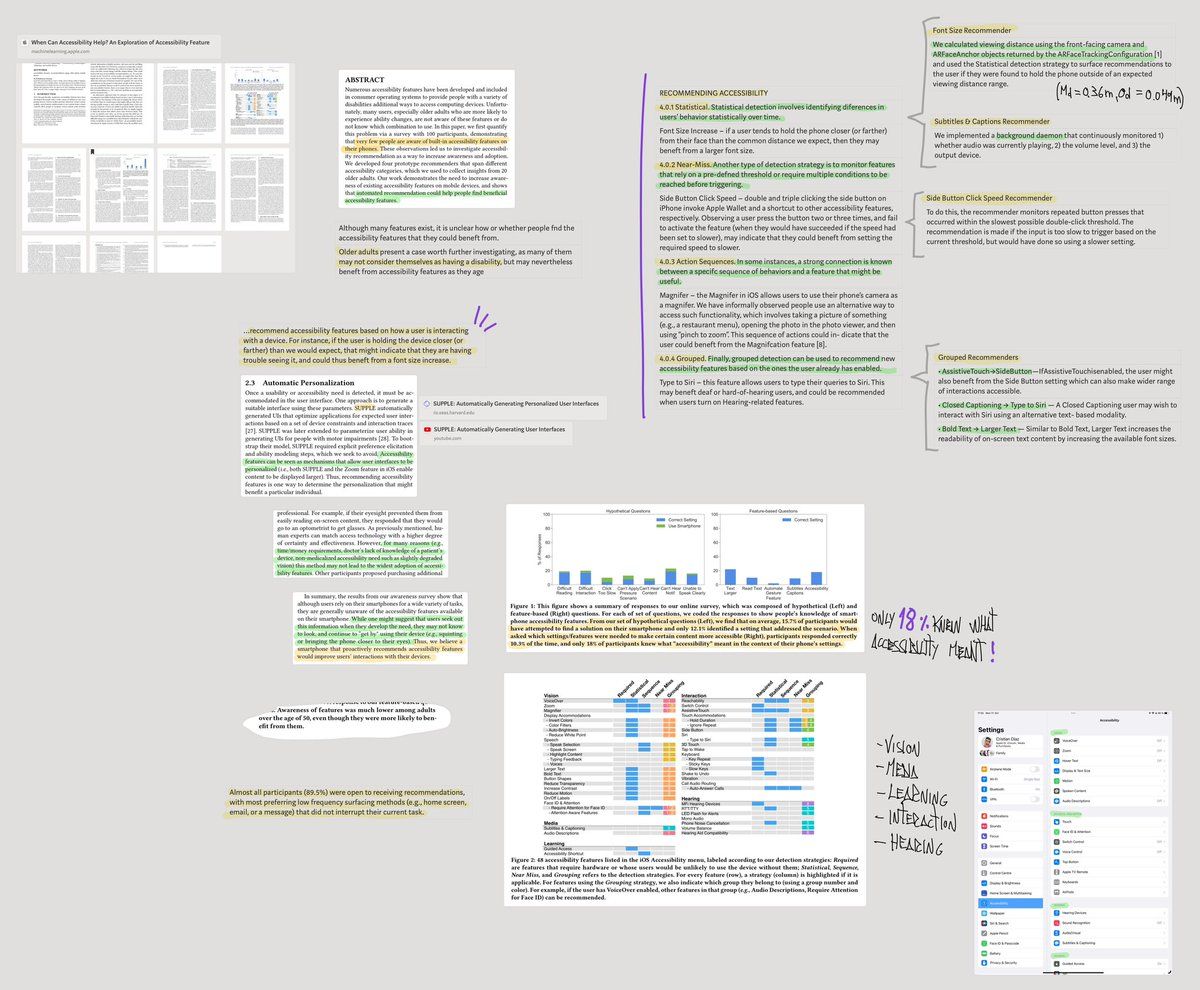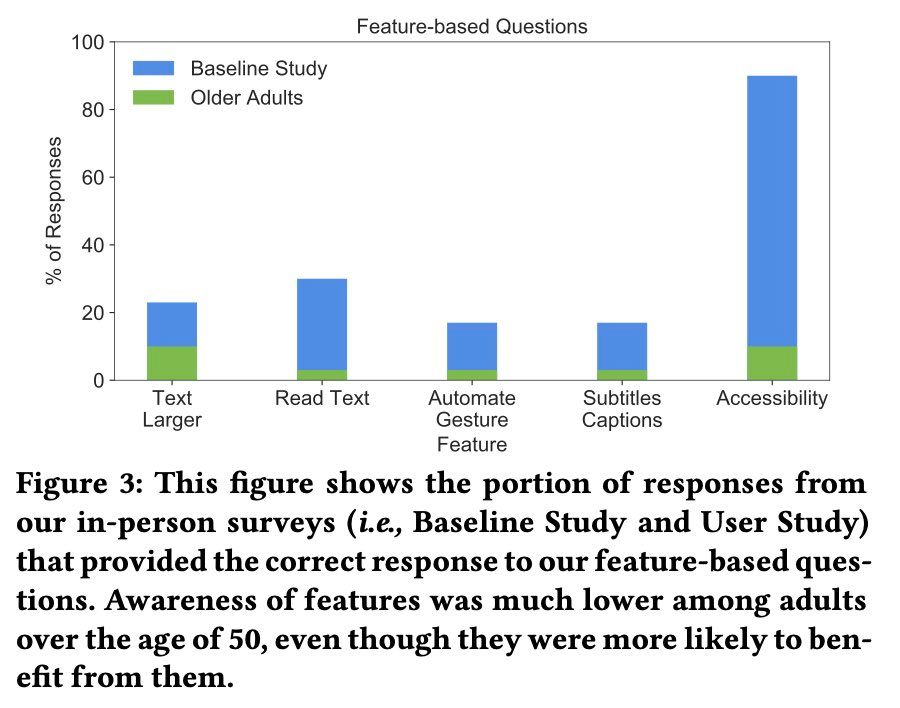-
Accessibility features can be seen as mechanisms that allow user interfaces to be personalized, and a system that recommends them based on how a person uses a device can demonstrate to be very helpful
-
The paper When Can Accessibility Help? shows that this is the case. Based on a survey with 100 participants, the researches designed detection strategies and prototypes to collect insights from 20 older adults machinelearning.apple.com/research/recommending-accessibility
-
From the survey, 4 detection strategies were identified:
-
1. Statistical: identifies differences in users’ behaviour over time
-
2. Near-Miss: monitor features that rely on a preset threshold or multiple conditions to be reached before triggering
-
3. Action Sequences: based on the known connection between a specific series of behaviours and a feature that might be useful
-
4. Grouped: recommends accessibility features based on the ones the user already has enabled
-
During the process, participants commonly said they would ask a doctor if they were impaired. For example, if their eyesight prevented them from reading on-screen content, they responded that they would go to an optometrist to get glasses
-
But even though human experts are able to match access technology with a higher degree of certainty, there are many reasons why this method may not lead to the widest adoption of accessibility features (e.g.,time/money, lack of knowledge).
-
Participants, even if some didn't identify as having a disability, observed that the recommenders pointed to potential useful features under the accessibility menu (where they would not have thought of looking)
-
Almost all participants (89.5%) were open to receiving recommendations, with most preferring low frequency surfacing methods (e.g., home screen, email, or a message) that did not interrupt their current task
-
The categorization of the 50+ accessibility features present on iOS and the idea of data-driven methods of identifying accessibility recommendation triggers (in a privacy-preserving manner) is inspiring
-
And even if some features require a system level implementation, many learnings can be applied already per app basis. Many thanks to the authors 🦾


